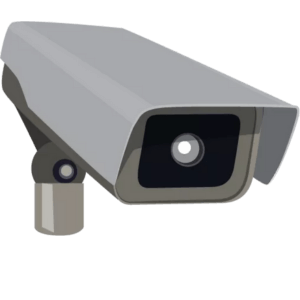Apartment Building Security Tips: Ensuring Safety and Peace of Mind
Living in an apartment building offers convenience and community, but it also comes with unique security considerations. Whether you’re a tenant, landlord, or property manager, ensuring the safety and security of an apartment building is of paramount importance. In this comprehensive blog, we will explore a range of practical security tips designed to enhance the safety and well-being of residents and protect the property from potential security threats.
1. Secure Entry Points
-
Quality Locks and Deadbolts: Install high-quality locks and deadbolts on all entry doors to prevent unauthorized access. Consider using smart locks with unique access codes for added security and convenience.
-
Surveillance Cameras: Implement surveillance cameras at building entrances and common areas to deter criminal activity and provide valuable evidence in the event of security incidents.
2. Adequate Lighting
-
Well-Lit Common Areas: Ensure that all common areas, including hallways, stairwells, and parking lots, are well-lit to deter criminal activity and provide a sense of safety for residents.
-
Motion-Activated Lights: Install motion-activated lights in outdoor areas to illuminate entryways and deter potential intruders.
3. Access Control
-
Key Fob or Card Access: Consider implementing key fob or card access systems to control entry into the building, limiting access to authorized residents and approved visitors.
-
Intercom Systems: Install intercom systems at building entrances to allow residents to verify the identity of visitors before granting them access.
4. Emergency Preparedness
-
Emergency Exits: Ensure that emergency exits are clearly marked and unobstructed, and conduct regular drills to familiarize residents with evacuation procedures.
-
Emergency Contact Information: Provide residents with emergency contact information for local law enforcement, fire departments, and building management.
5. Community Engagement
-
Neighborhood Watch Programs: Encourage residents to participate in or establish a neighborhood watch program to foster a sense of community and enhance security awareness.
-
Communication Channels: Establish effective communication channels, such as community bulletin boards or digital platforms, for sharing security tips, updates, and emergency alerts.
6. Professional Security Services
-
Security Patrols: Consider engaging professional security patrols to monitor the premises, conduct regular patrols, and respond to security concerns in a timely manner.
-
Security Assessments: Periodically conduct security assessments to identify vulnerabilities and implement appropriate security measures based on the findings.
7. Secure Common Areas
-
Storage and Mail Areas: Secure storage rooms, mail areas, and other common spaces to prevent unauthorized access and protect residents’ belongings.
-
Landscaping and Maintenance: Keep the surrounding landscape well-maintained to minimize hiding spots for potential intruders and enhance the overall visibility of the property.
8. Tenant Education
-
Security Guidelines: Provide residents with comprehensive security guidelines, including tips for securing their individual units and reporting suspicious activities.
-
Security Seminars: Host security seminars or workshops to educate residents on crime prevention, emergency preparedness, and personal safety measures.
Conclusion
By implementing proactive security measures and fostering a culture of safety and vigilance, apartment building stakeholders can create a secure and welcoming living environment for residents. These comprehensive security tips are designed to mitigate security risks, promote community well-being, and provide peace of mind for all those who call the apartment building home. Together, these efforts contribute to a safer and more secure living experience, reinforcing the value of a proactive approach to apartment building security.
FREQUENTLY ASKED QUESTIONS
Why is apartment building security important?
Apartment building security is crucial for the safety and well-being of residents and to protect property from theft, vandalism, and unauthorized access.
What are some common security vulnerabilities in apartment buildings?
Common security vulnerabilities in apartment buildings include inadequate door locks, lack of surveillance cameras, poorly lit areas, and easy access points for intruders.
How can access control systems improve apartment building security?
Access control systems, such as key card entry or intercom systems, restrict entry to authorized individuals only, preventing unauthorized access and enhancing overall security.
What role do surveillance cameras play in apartment building security?
Surveillance cameras act as a deterrent to crime and provide valuable evidence in the event of incidents such as theft or vandalism. They also help monitor common areas and parking lots for added security.
How can lighting contribute to apartment building security?
Adequate lighting in common areas, parking lots, and entrances improves visibility and deters criminal activity by reducing hiding spots for potential intruders.
Are security patrols necessary for apartment buildings?
Security patrols can provide an added layer of security by conducting regular patrols of the premises, responding to security threats, and providing a visible presence to deter criminal activity.
What measures can residents take to enhance apartment building security?
Residents can contribute to apartment building security by practicing good security habits such as keeping doors and windows locked, reporting suspicious activity, and participating in building security initiatives.
How often should apartment building security measures be evaluated and updated?
Apartment building security measures should be regularly evaluated and updated to adapt to changing security threats and technologies. It’s advisable to conduct security assessments periodically to identify weaknesses and implement improvements.
What should property managers consider when implementing security measures in apartment buildings?
Property managers should consider factors such as budget constraints, tenant preferences, local regulations, and the unique security needs of the building when implementing security measures.
Where can I find more information about apartment building security best practices?
You can find more information about apartment building security best practices by consulting security experts, industry publications, and government resources dedicated to crime prevention and building safety.


